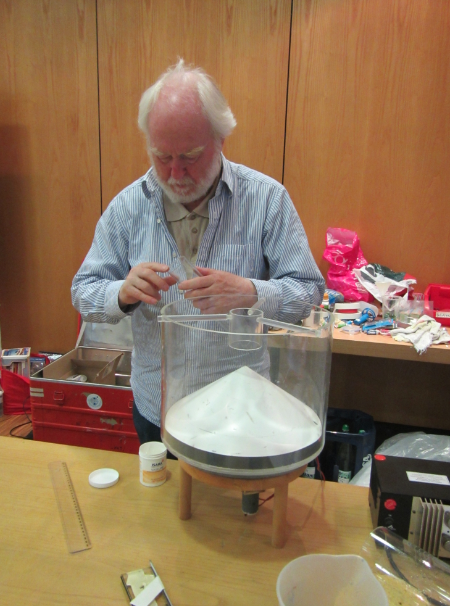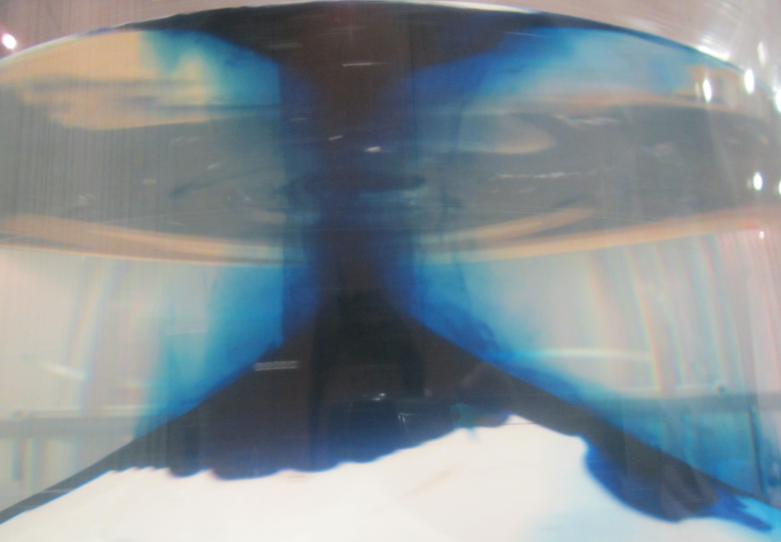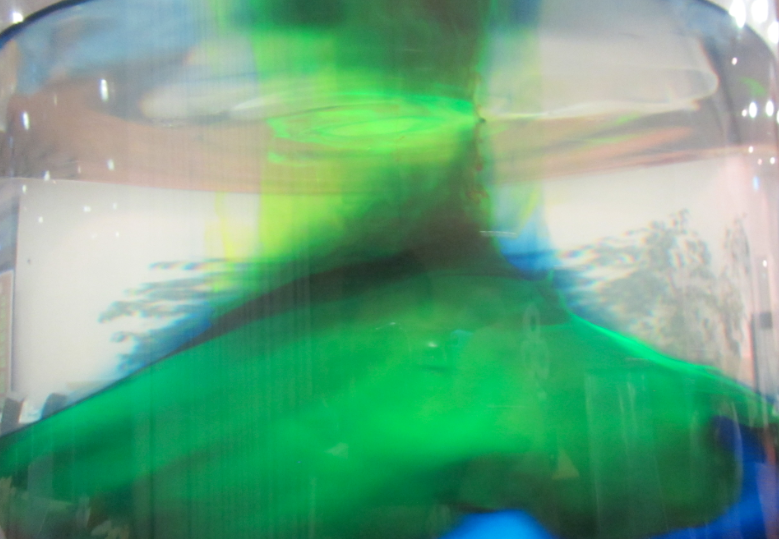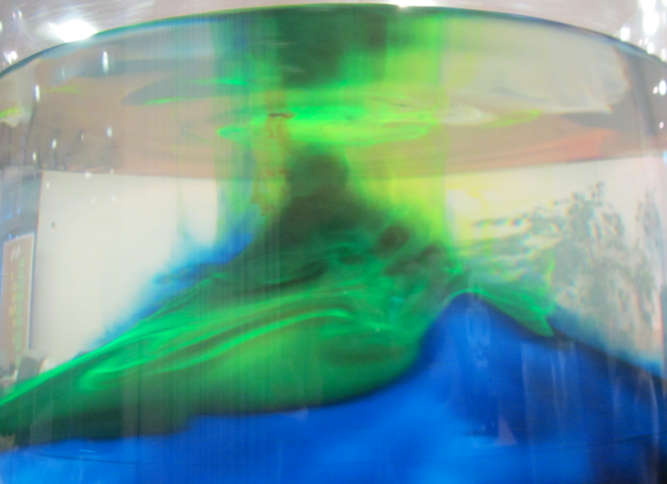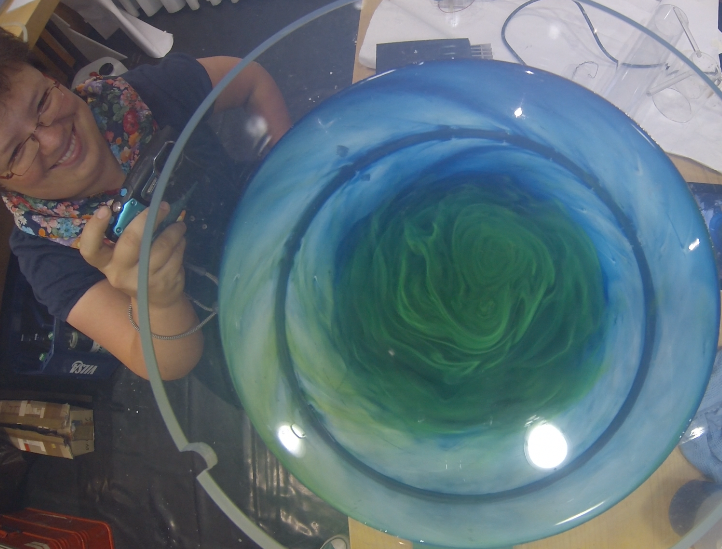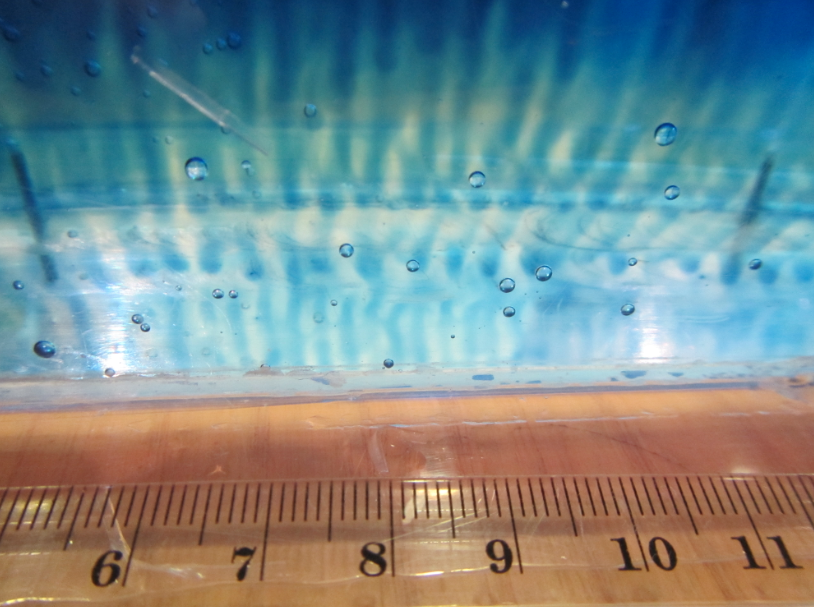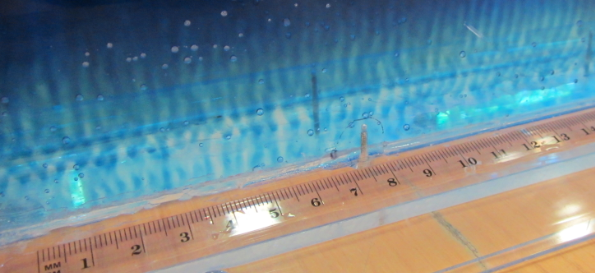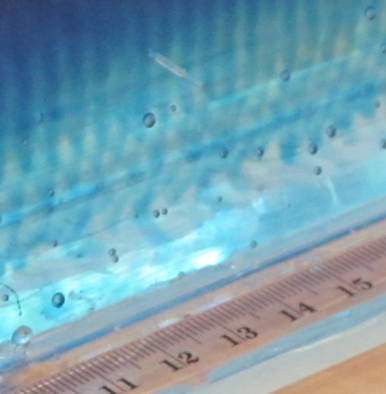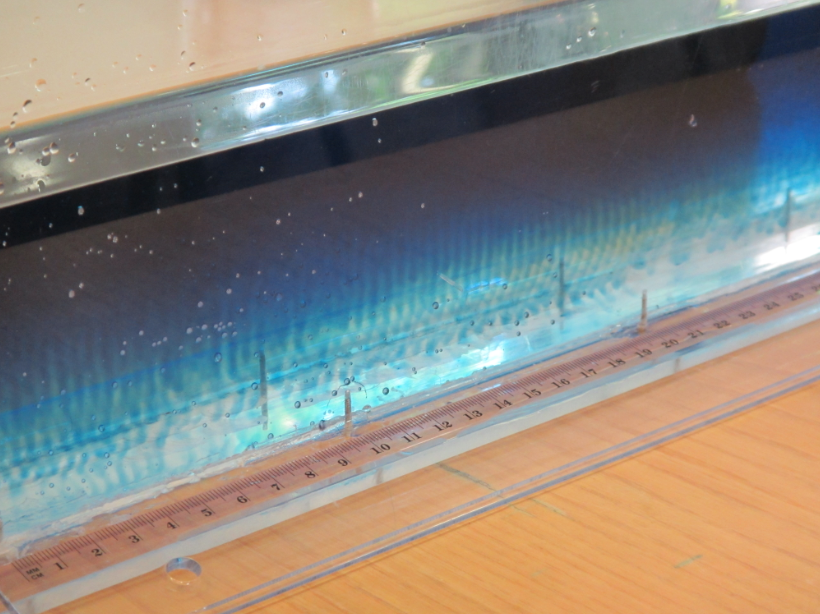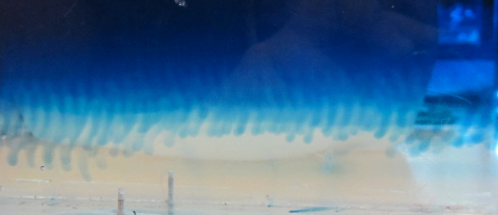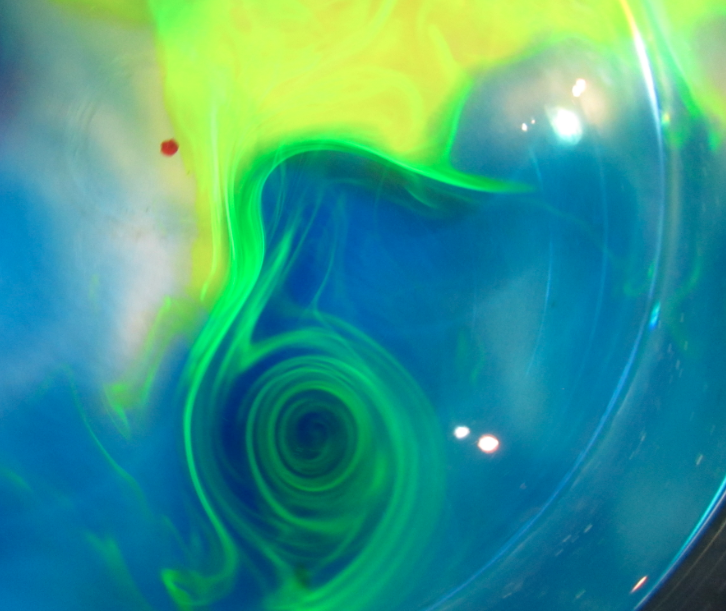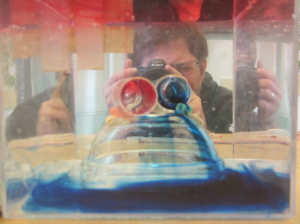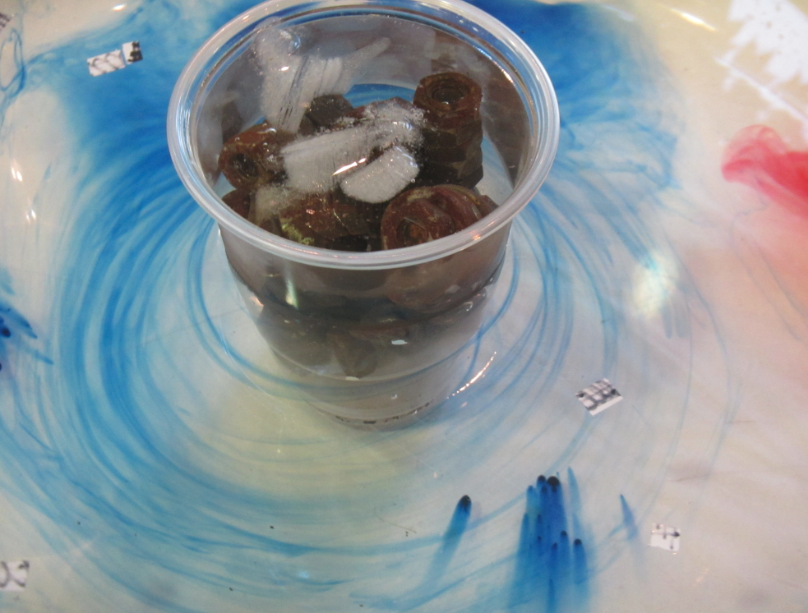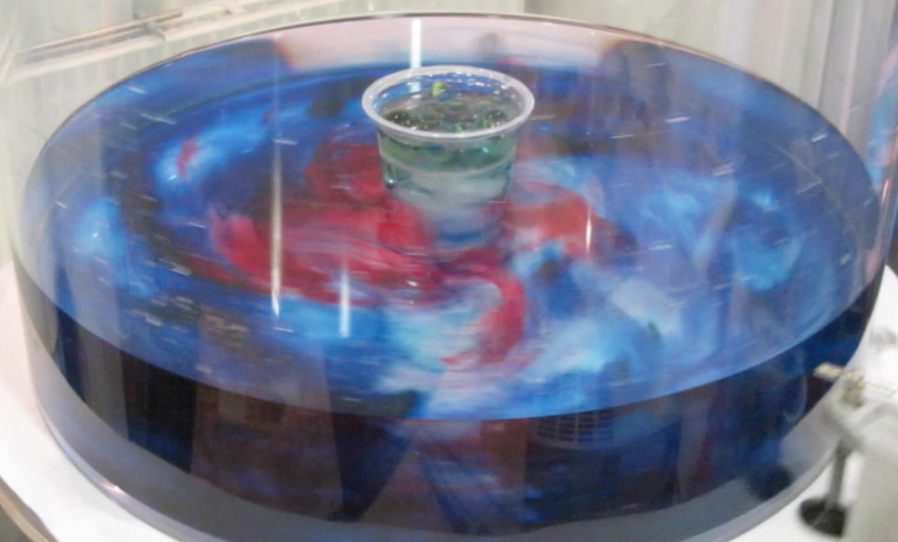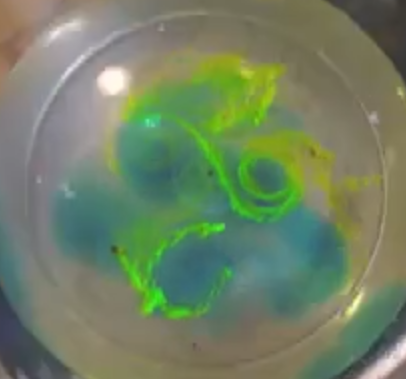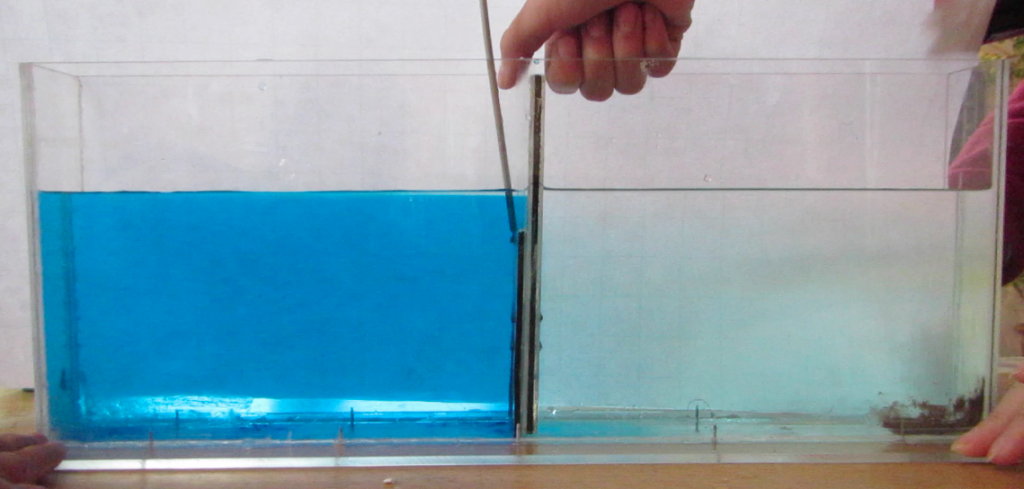Water running uphill during spin-down – how much more awesome can it get?
After hours, when all but the most curious students had left, Rolf and I ran another collapsing cylinder experiment, this time on Rolf’s old disk player turned rotating table.
Rolf has a cone-inset for the round tank, and we set a cylinder on top of the cone and filled it with dyed salt water. The rest of the tank was filled with fresh water and the whole system spun up into solid body rotation. Then the cylinder was pulled out and here is what happened:
The column sat right on top of the cone! And stayed there, and stayed there, and stayed there. Slowly a bottom boundary layer started creeping down the slope, so we decided to add more color.
Nice to see that, for a change, we calculated all the parameters correctly! But then The Boss himself had done the calculations this time round…
But the most fascinating thing happened during spin-down when we had stopped the tank: The column slowly withdrew up the slope again! Our two fascinated students were absolutely wowed (and that’s saying something – they were really impressed with the salt fingers earlier already).
Watch the movie below for some impressions of the experiment.
